During the past 30 years, doctors have noted an increase in the number and severity of broken ankles, due in part to an active, older population of “baby boomers.” More than 1.3 million people visited emergency rooms in 1998 because of ankle problems. The ankle actually involves two joints, one on top of the other. A broken ankle can involve one or more bones, as well as injuring the surrounding connecting tissues (ligaments).
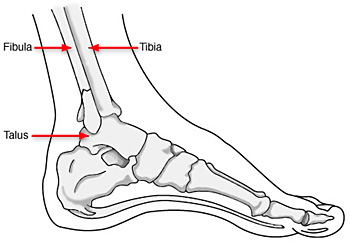
Anatomy of the Ankle
When a Break Occurs
Any one of the three bones that make up the ankle joint could break as the result of a fall, an automobile accident or some other trauma to the ankle.
Because a severe sprain can often mask the symptoms of a broken ankle, every injury to the ankle should be examined by a physician. Symptoms of a broken ankle include:Immediate and severe pain, Swelling, Bruising, Tender to the touch, Inability to put any weight on the injured foot., Deformity, particularly if there is a dislocation as well as a fracture.
A broken ankle may also involve damage to the ligaments. Your physician will order X-rays to find the exact location of the break. Sometimes, a CT (computed tomography) scan or a bone scan will also be needed.
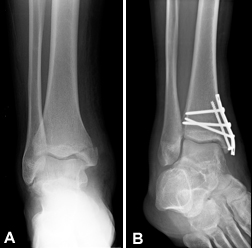
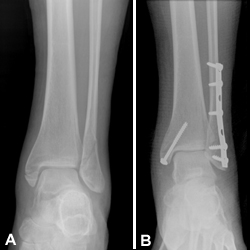
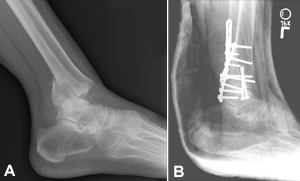
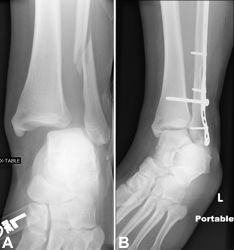
Treatment and Rehabilitation
If the fracture is stable , it can be treated with a leg cast or brace. Initially, a long leg cast may be applied, which can later be replaced by a short walking cast. It takes at least six weeks for a broken ankle to heal, and it may be several months before you can return to sports at your previous competitive level. Your physician will probably schedule additional X-rays while the bones heal, to make sure that changes or pressures on the ankle don’t cause the bones to shift. If the ligaments are also torn, or if the fracture created a loose fragment of bone that could irritate the joint, surgery may be required to “fix” the bones together so they will heal properly. I may use a plate, metal or absorbable screws, staples or tension bands to hold the bones in place. Usually, there are few complications, although there is a higher risk among diabetic patients and those who smoke. Afterwards, I will prescribe a program of rehabilitation and strengthening. Range of motion exercises are important, but keeping weight off the ankle is just as important. A child who breaks an ankle should be checked regularly for up to two years to make sure that growth proceeds properly, without deformity or uneven leg-length.
For more info visit www.foothealthfacts.org/footankleinfo/ankle-fracture.htm
